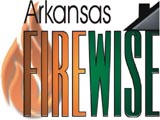

Before you buy a smoke detector, make sure it is listed and approved by an independent testing laboratory and the State Fire Marshal. Read the instructions enclosed with your smoke detector carefully to find out exactly how and where to install it. Be sure to test your smoke detector each month and change its batteries at least twice a year. A good habit to follow is to change the batteries in your smoke detector in the spring and fall when you change your clocks.
Portable Fire Extinguishers
Portable fire extinguishers can save lives and property by helping you put
out or contain small fires until the fire department arrives. But they must
be used properly and under the right conditions.
Be sure the fire extinguisher is listed and approved by an independent testing laboratory and the State Fire Marshal. Extinguishers are identified by the type of fire on which they can be used:
A - wood or cloth fires
B - flammable liquid fires
C - electrical fires
D - flammable metal fires
Make sure that each member of your family can hold and operate the fire extinguisher
and know where it is located. Mount extinguishers in easy-to-get-to places.
Remember that fire extinguishers need annual maintenance and must be recharged
after every use.
Home Sprinkler Systems
Home sprinkler systems are one of the most reliable and effective forms of
protection from fire because they provide an immediate response to extinguish
a fire inside your home. They also can extinguish a fire when you are asleep
or when you are away.
Home sprinkler systems may pay for themselves in just a few years through reduced insurance premiums. Contact your local fire department for information on selecting an approved sprinkler system for your home.
Draw a floor plan of your home and mark all possible escape routes. Be sure you know two safe ways out of every room, especially bedrooms.
Practice your escape. Conduct home fire drills often and vary the drill to prepare for different emergency situations.
If your clothes catch fire: STOP, DROP AND ROLL!
Plan Your Escape!
It is important that all family members know what to do in an emergency. Even
with an early warning from a smoke detector, escaping a fire can be difficult
or impossible. Fire can spread very rapidly, blocking exits and creating dangerous,
smoky conditions.
Smoke is your enemy! Even a few breaths of smoke and toxic gases can choke and kill you. If you become trapped in smoke, crawl low and keep your head down. Smoke and heat rise, so cleaner air is near the floor.
Contact your neighbors and local authorities to pre-plan community emergency procedures, such as standard escape routes and common meeting places. Also, it is helpful to develop a community alert system that can be used during a fire or other emergency. With an alert system, anyone who spots an emergency will know how to react so that everyone in your neighborhood will be notified in time to respond.
Here are the steps you should take to plan your escape:
Draw a floor plan of your home and mark all possible escape routes. Make
sure you know two safe ways out of every room, especially the bedrooms.
Prepare a list of valuables to take with you in an emergency. If you can,
store these valuables together to save time later.
Remember that young, elderly and disabled persons may need assistance. Their
rooms should be located as close to an exit as possible. Train the rest of
your family to help them get out in an emergency.
Remind everyone to close doors behind them as they evacuate the house to slow
down the spread of fire, smoke and heat.
Decide on an outside meeting place to assemble your family and to make sure
everyone is out.
Practice your escape! Conduct home fire drills often, varying the drill to
prepare for different fire situations. You may be blinded by smoke, so try
practicing your escape plan with your eyes closed.
In the event of a fire, remember the following:
Before you exit your room, feel the door. If it is hot, don't open it. Use
your second way out.
If smoke, heat or flames block both of your escape routes, stay in the room
with the door closed.
Stuff sheets, blankets or towels in cracks around the door and around heating
and air conditioning vents to keep smoke and fumes out.
Open a window as long as no smoke is entering the room. Hang a bright sheet
or cloth out the window to signal for help.
If there is a phone in the room, dial 9-1-1 and tell the emergency dispatcher
where you are.
If you clothes catch fire: STOP, DROP AND ROLL!